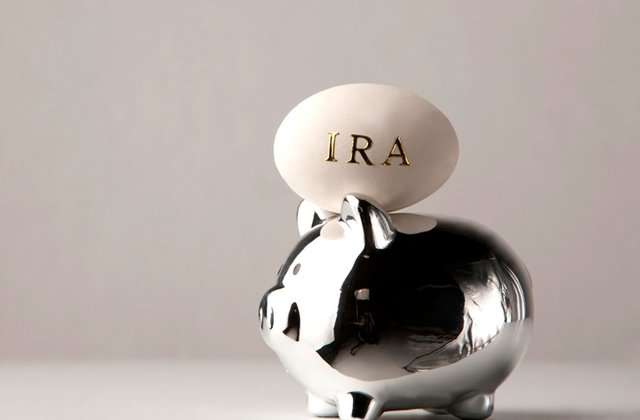
A simplified employee pension plan and SEP IRA are options for investors who are self-employed or run their own business.
While many small business owners may be concerned about cash flow and how much they can invest in retirement , an SEP IRA offers flexible contributions that are easy for employers to increase, decrease or suspend.
What's an SEP IRA? Think of it as another individual retirement account set up specifically for business owners, says Wayne Bland, a financial advisor for Metro Retirement Plan Advisors in Charlotte, North Carolina.
It's similar to a traditional IRA except there are higher contribution limits and no minimums.
[See: 7 Stocks to Buy When a Recession Hits .]
For 2016 filings, you are allowed to contribute whichever is less: $53,000, or 25 percent of an employee's compensation up to $265,000. In the case of self-employed individuals the 25 percent limit converts to 20 percent of net self-employment income.
That's a lot more than the $5,500 maximum ($6,500 cap for those age 50 and older) the Internal Revenue Service puts on a Roth or a traditional IRA.
To maximize their investment strategy, some employees will have a Roth IRA as well as an SEP IRA, Bland says.
Like a traditional IRA, an SEP IRA has a required minimum distribution at age 70.5, which will be taxed at ordinary income tax rates. Similarly, an SEP can also be invested in any kind of security including stocks, bonds, mutual funds and exchange-traded funds . And if you keep working past 70.5, you can continue to make SEP contributions.
Who should consider an SEP? Any business owner who is in an individual LLC, partnership, S- or C- corporation should consider an SEP, says Paul Ferrigno, a certified financial planner at Ferrigno Financial in Washingtonville, New York. "I advise my clients to open these plans when they have a small family business or limited number of employees that the employer feels the obligation to help save for retirement," Ferrigno says.
Small business owners should start by deciding if they want to make all the contributions or if they want employees to be able to contribute, Ferrigno says, since SEP IRAs only allow employer contributions.
Bland says about 65 percent of his clients who add SEP IRAs to their investing strategy are self-employed and the other 35 are small business owners. "Once they get 10 or more employees they usually start looking at 401(k) plans or other options," he says.
Be aware that if you, as an owner, make a contribution to your account, you must also make the same percentage contribution to each eligible employee. For example, if you contribute 20 percent of your salary to your SEP IRA, you must also contribute 20 percent of an employee's salary to their SEP.
[See: The Perfect 10 Shares .]
Although contributions aren't mandatory, it's preferable to contribute throughout the year, ideally on a monthly basis, to avoid making a one-time larger payment that's not always possible for small businesses and individuals who are self-employed, says Greg Wells, vice president of EP Wealth Advisors in Torrance, California.
"SEPs are great because they can be opened and funded after the year ends, all the way up until the extension if the person files for an extension," Wells says. If a small business owner filed an IRS extension for the 2015 tax year, they could wait until six months after the filing deadline to open a SEP IRA or make a contribution.
Wells says the plan "is very beneficial" for small businesses and self-employed where cash flow can be a problem.
"It's also a great tax planning technique as one can wait until their year ends and see where the numbers finish, then decide what to contribute to a SEP," he says.
For example, Bland says he works with a client who runs three nightclubs and typically makes his SEP contribution the day before filing his taxes because his income radically fluctuates and he wants to avoid contributing too much.
Employee eligibility. It's also important to remember that if you decide to create an SEP IRA, your employees must be included if they are at least 21, have received at least $600 in the past year or have worked for your business in at least three of the last five years.
Employers may also expand the scope of the obligatory rules and include younger employees, such as someone who is 18, or employees who have worked for a shorter period of time.
Even though the contributions are discretionary, employers need to fill out an IRS 5305-SEP Form, which doesn't have to be mailed back to the IRS, Bland says, but does need to be shared with employees to make them aware they may be eligible for a SEP IRA.
Make sure your business is set up with an employer identification number, also known as an EIN.
"I've never seen anyone set up a SEP under their own social security number, it's always been under an EIN number," Bland says.
Where should you go? "We recommend one of the discount brokerage firms who have no setup fees, no maintenance fees, extremely low trading cost and commission-free options," Wells says. "[Charles] Schwab, Fidelity and TD Ameritrade are all great low-cost options, and easy to work with if a client is up against the deadline."
Pitfalls to consider. Unlike a 401(k), employees are 100 percent vested once you contribute. That means when you contribute to a SEP on the behalf of an eligible employee, that money automatically belongs to them.
"If they quit and go to work for a competitor down the street they take all of those contributions with them," Bland says.
Similar to a traditional or Roth IRA , individuals can make early withdrawals from a SEP IRA with a 10 percent penalty. But investors can avoid the penalty if they meet a qualifying factor, such as withdrawing to pay medical expenses that are more than 10 percent of their gross income or as a first-time homebuyer who withdraws up to $10,000.
"There's no ability to take early distributions from the account if you retire prior to 59.5 as some other qualified plans may allow," Ferrigno says.
Use your SEP as a retention strategy. With millennials and others in the workforce switching employers more frequently, an SEP can also be an added perk and help business owners retain talented employees, Ferrigno says.
[Read: How to Defend Your Portfolio With Utilities .]
"Most investment options are available in whatever type of retirement plan you open," he says. "But employees love to know that the company is contributing 10, 15 or 25 percent above the gross pay to their retirement account. It reduces the need for the employee to save 10 percent of their gross pay."
Compare Offers
Compare Offers



Post a Comment